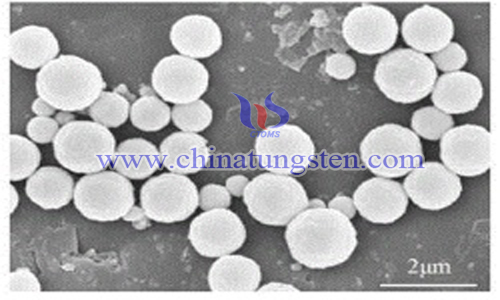Tungsten Carbide Ceramic Heat-resistant and Wear-resistant Composites Preparation
- Details
- Category: Tungsten Information
- Published on Sunday, 11 November 2018 23:13
Tungsten carbide ceramics are widely used in metal processing, mining and other fields because of their high hardness, wear resistance, heat resistance, corrosion resistance and other excellent properties. However, tungsten carbide ceramics have high manufacturing cost and brittleness, and are not suitable for wearable parts with high impact force.

The waste tungsten carbide ceramics were compounded with iron-based alloys with good toughness, high strength and low price by composite preparation technology, and the surface heat-resistant and wear-resistant composite materials were prepared. The high hardness, high heat-resistant and wear-resistant tungsten carbide ceramics were obtained with high strength and good toughness, and expensive tungsten carbide could be saved. Ceramics reduce the cost of heat resistant and wear-resistant parts and expand the application scope of tungsten carbide ceramics.
In order to achieve the above objectives, some enterprises have adopted a preparation method of tungsten carbide ceramic/heat-resistant alloy-based heat-resistant and wear-resistant composite materials.
Step 1, the waste wolfram carbide ceramics (1) are cut and processed into composite reinforcement with required shape and size. YG8 wolfram carbide ceramic waste is selected and processed into wolfram carbide ceramic reinforcement with dimension 5mm x 8mm by wire cutting. Sandblasting is carried out after oil removal, and finally cleaning is carried out.
Step 2, one end of the WC ceramic reinforcement treated in step 1 is welded with iron nails (2). Vacuum brazing process is used for the welding, and high melting point foil brazing filler metal (3) with thickness of 0.2-0.5mm is used for the brazing.
Step 3, the tungsten carbide ceramic scrap (2) welded with iron nails (2) is coated with metal buffer layer by electroplating process. The tungsten carbide ceramic scrap (1) uses Co as binder. First, a layer of nickel is electroplated with a thickness of 40-80 um, and then an iron layer is electroplated with a thickness of 160-200 um.
Step 4, according to the working condition of the heat-resistant and wear-resistant wearing parts, the shape, size, arrangement and volume fraction of the heat-resistant alloy are designed, and the controllable range of the volume fraction is: 20% to 50%, and the wearable is easy to wear according to the method. The blind hole (7) of the tungsten carbide ceramic is placed on the model (6), and the wearable part model (6) is a polystyrene foam model or a paraffin mode.
Step 5, inserting the prepared tungsten carbide ceramic into the wearable part model (6), and the nail (2) faces outward;
Step 6, after casting, the casting is taken out, the nail is cut, the working surface is polished with a diamond grinding wheel, and then the workpiece is heat-treated. The quenching process is: heating temperature 960-980 ℃, heating rate: 80-100 ℃ / h, heat preservation 8 ~ 10h, air cooling; destressing treatment process: heating temperature 260 ~ 300 ℃, heat preservation 8 ~ 10h, furnace cooling, prepared coal mill lining finished products (8).
The lost foam casting method is used. When casting, the model is placed in the sand box which can be vacuumed to ensure that the metal fully permeates the reinforcement without cold isolation or inadequate pouring. The vacuum degree is 0.02 Mpa to 0.08 Mpa, and the casting temperature is 1350 to 1450 ℃.
Practice has proved that the cost of coal mill liner using tungsten carbide ceramics/heat-resistant cast iron-based heat-resistant and wear-resistant composite material has increased by 25% compared with that of heat-resistant cast iron coal mill liner, but its heat-resistant and wear-resistant performance has increased by 8 times and has a high cost-performance ratio.
- Tungsten Carbide Manufacturer & Supplier, Chinatungsten Online: tungsten-carbide.com.cn
- Tungsten News & Prices of China Tungsten Industry Association: www.ctia.com.cn
- Molybdenum News & Price: news.molybdenum.com.cn
- Tel.: 86 592 5129696; Fax: 86 592 5129797; Email: sales@chinatungsten.com



 sales@chinatungsten.com
sales@chinatungsten.com